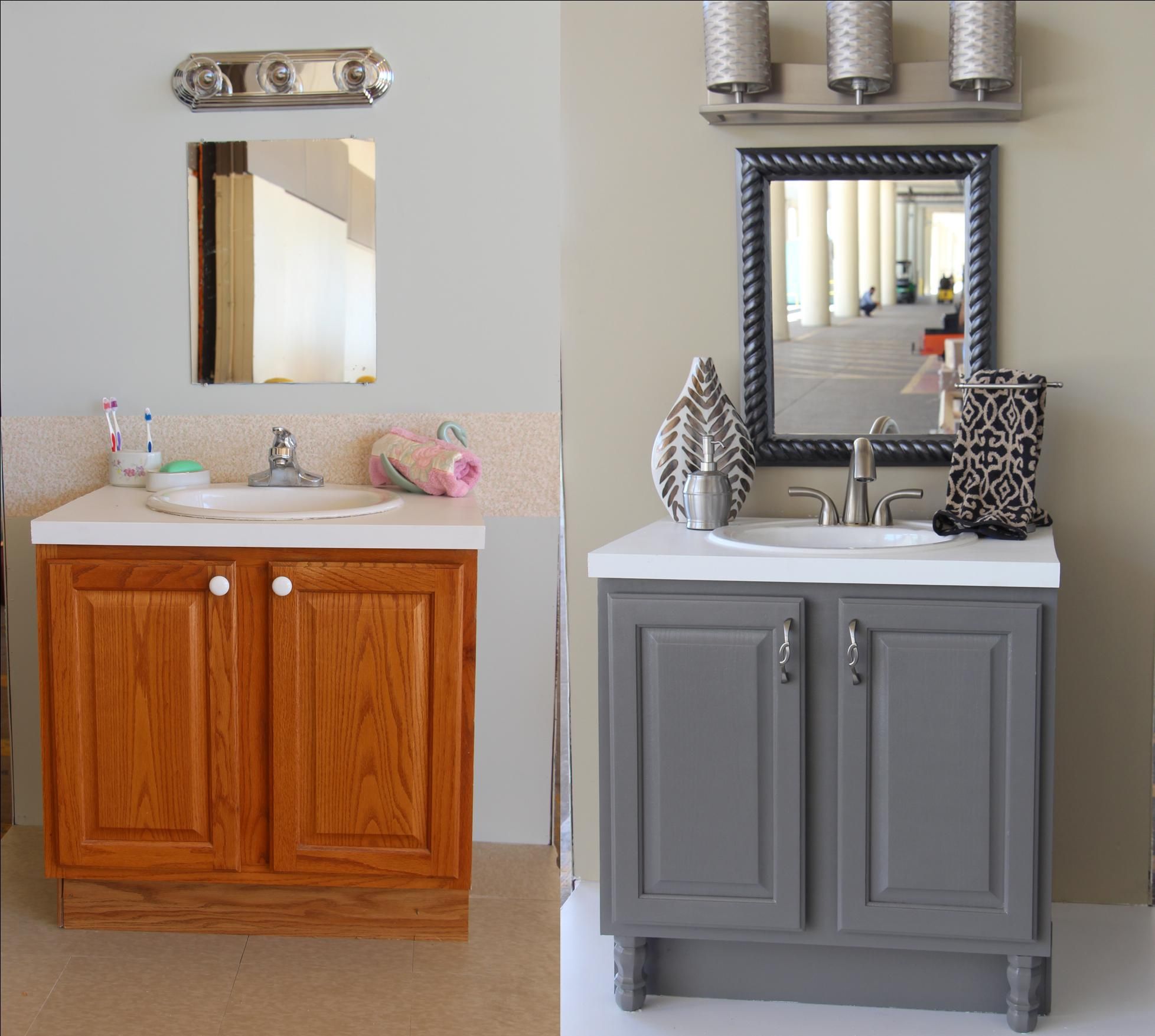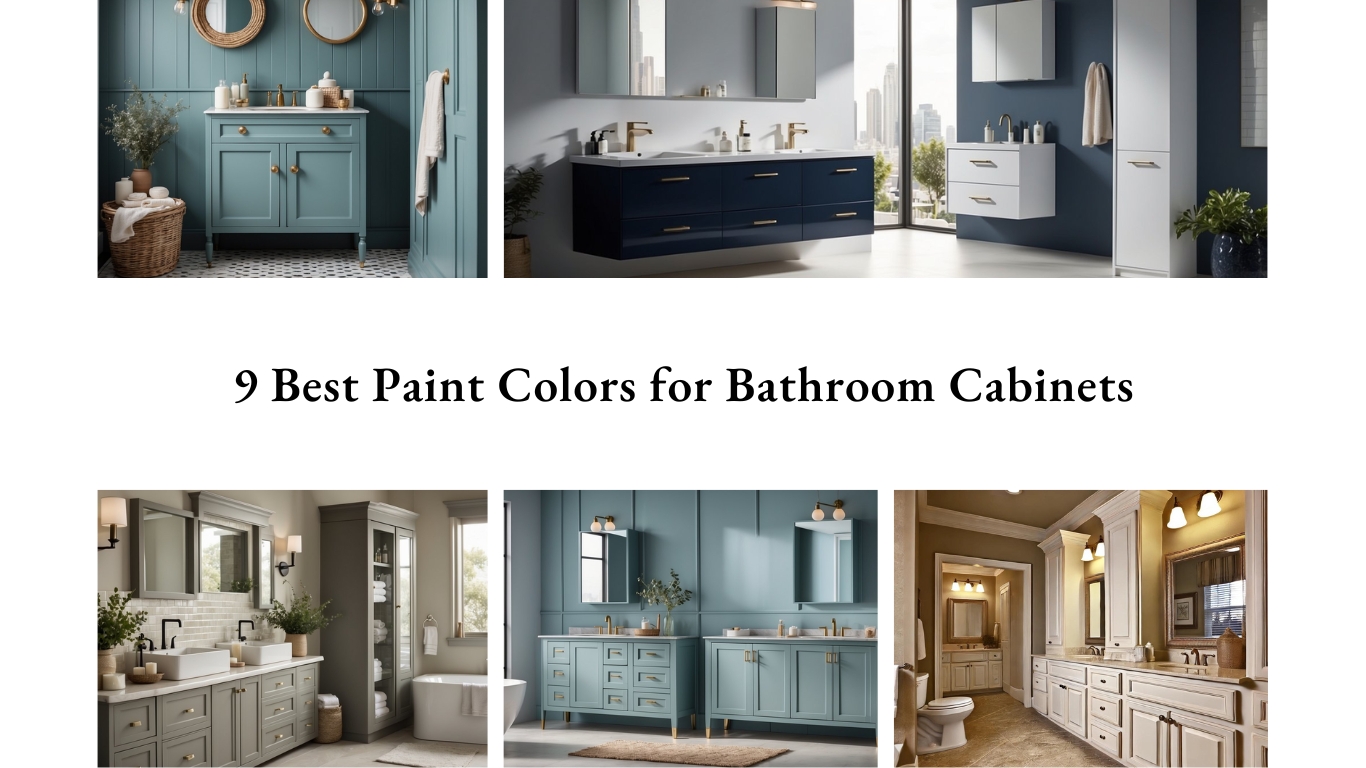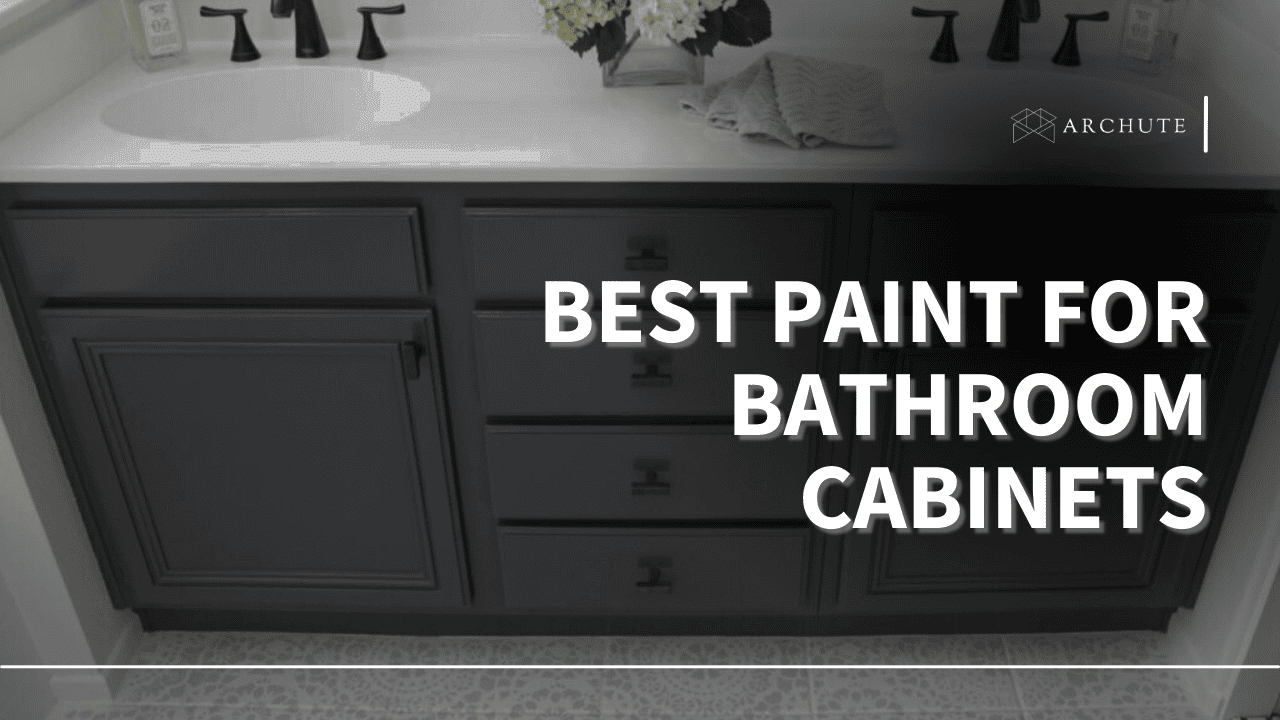Types of Paint for Bathroom Cabinets: Best Paint For A Bathroom Cabinet

Choosing the right paint for your bathroom cabinets is crucial, as it needs to withstand moisture, humidity, and frequent cleaning. Here’s a breakdown of common paint types and their suitability for this demanding environment.
Oil-Based Paint
Oil-based paints are known for their durability, excellent adhesion, and resistance to moisture. They create a hard, glossy finish that’s easy to clean.
- Pros:
- Highly durable and resistant to moisture.
- Provides a smooth, glossy finish that’s easy to clean.
- Excellent adhesion to various surfaces.
- Cons:
- Strong odor and long drying time.
- Requires mineral spirits for cleanup, which can be messy.
- Not as environmentally friendly as water-based paints.
Latex Paint, Best paint for a bathroom cabinet
Latex paints are water-based and offer a more user-friendly experience compared to oil-based paints. They are becoming increasingly popular for bathroom cabinets due to their low odor, quick drying time, and ease of cleanup.
- Pros:
- Water-based, making them easy to clean up with soap and water.
- Low odor and quick drying time.
- More environmentally friendly than oil-based paints.
- Cons:
- Not as durable as oil-based paints.
- May require multiple coats for full coverage.
- Less resistant to moisture and humidity compared to oil-based paints.
Epoxy Paint
Epoxy paints are known for their exceptional durability and resistance to moisture, making them ideal for high-traffic areas like bathrooms. They create a hard, non-porous finish that’s highly resistant to scratches and stains.
- Pros:
- Extremely durable and resistant to moisture, chemicals, and abrasion.
- Creates a hard, non-porous finish that’s easy to clean.
- Resistant to mold and mildew growth.
- Cons:
- Can be difficult to apply, requiring specialized techniques.
- Limited color options compared to other paint types.
- May require a professional for application.
Acrylic Paint
Acrylic paints are water-based and offer a balance of durability, moisture resistance, and ease of application. They are a good choice for bathroom cabinets, especially when looking for a more decorative finish.
- Pros:
- Water-based, making them easy to clean up with soap and water.
- Quick drying time and low odor.
- Available in a wide range of colors and finishes.
- Cons:
- Not as durable as oil-based or epoxy paints.
- May require a sealant for added moisture protection.
Importance of Primer for Bathroom Cabinets
Using a primer specifically designed for bathroom cabinets is essential for creating a durable and moisture-resistant finish. Primers help to:
- Improve Adhesion: Create a strong bond between the paint and the cabinet surface, preventing peeling or chipping.
- Seal the Surface: Block moisture from penetrating the wood, reducing the risk of mold and mildew growth.
- Enhance Paint Coverage: Provide a smooth and even surface for the paint to adhere to, resulting in a more uniform finish.
Recommended Paint Brands for Bathroom Cabinets
Several paint brands offer products specifically designed for bathroom environments. Here are a few examples:
- Benjamin Moore: Known for their high-quality paints and finishes, Benjamin Moore offers a range of moisture-resistant options, including their Advance Interior Acrylic Latex paint and their Aura Interior Acrylic Latex paint.
- Sherwin-Williams: Another reputable paint brand, Sherwin-Williams offers their Emerald Interior Acrylic Latex paint, known for its durability and moisture resistance. Their ProClassic Interior Acrylic Latex paint is also a popular choice for bathroom cabinets.
- Valspar: Valspar offers their Reserve Interior Acrylic Latex paint, known for its excellent adhesion and moisture resistance. They also have a range of primers specifically designed for bathroom cabinets.
Choosing the Right Color and Finish

Selecting the perfect paint color and finish for your bathroom cabinet can significantly impact the overall aesthetic of your bathroom. Choosing a color that complements the existing décor and enhances the cabinet’s appearance is crucial. Additionally, considering the durability, cleaning ease, and aesthetic appeal of different finishes is essential.
Color Selection
Choosing the right color for your bathroom cabinet can transform the space. Consider the existing color scheme of your bathroom and choose a color that complements it.
- If your bathroom has a neutral color palette, you can opt for a bold color for the cabinet to create a focal point. For example, a deep blue or emerald green cabinet can add a touch of drama to a white bathroom.
- If your bathroom has a vibrant color scheme, choose a neutral color for the cabinet to create a sense of balance. For example, a white or gray cabinet can complement a colorful shower curtain or tile.
- Consider the natural light in your bathroom. If your bathroom has limited natural light, choose a light color for the cabinet to make the space feel brighter. If your bathroom has ample natural light, you can opt for a darker color to create a more intimate feel.
Finish Options
The finish of your bathroom cabinet paint can significantly impact its durability, cleaning ease, and aesthetic appeal.
- Matte finishes provide a flat, non-reflective surface that can help to hide imperfections. They are popular for traditional bathrooms but are less durable and can be more challenging to clean.
- Satin finishes offer a slightly sheen surface that is more durable than matte finishes. They are easy to clean and are a good choice for high-traffic areas.
- Semi-gloss finishes provide a more reflective surface than satin finishes. They are very durable and easy to clean, making them a good choice for bathroom cabinets. They can also help to brighten up a dark bathroom.
- Gloss finishes offer the highest level of shine and durability. They are the most challenging to apply but are the easiest to clean. They are a good choice for cabinets that will receive heavy use or for those who want a high-end look.
Finish Comparison Table
| Finish | Characteristics | Suitability for Bathroom Cabinets |
|---|---|---|
| Matte | Flat, non-reflective, hides imperfections, less durable, challenging to clean | Good for traditional bathrooms, less suitable for high-traffic areas |
| Satin | Slightly sheen, more durable than matte, easy to clean | Good for high-traffic areas, versatile choice |
| Semi-gloss | More reflective than satin, very durable, easy to clean, brightens up dark spaces | Good for bathroom cabinets, versatile choice |
| Gloss | Highest shine and durability, challenging to apply, easiest to clean, high-end look | Good for heavily used cabinets, ideal for those seeking a high-end look |
Preparing the Cabinets for Painting

A well-prepared surface is the key to a beautiful and long-lasting paint job. Before you start painting, take the time to properly prepare your bathroom cabinets. This will ensure the paint adheres properly and creates a smooth, even finish.
Cleaning the Cabinets Thoroughly
Cleaning the cabinets thoroughly removes dirt, grease, and grime, creating a clean surface for the paint to adhere to. This step is crucial for a successful paint job.
- Remove all hardware: This includes handles, knobs, hinges, and any other fixtures. Label them with masking tape to ensure they are put back in the correct place later.
- Use a degreaser: Apply a degreaser to the cabinet surfaces using a clean cloth. This will remove any oily residue left behind from cleaning products or hand creams.
- Rinse thoroughly: Rinse the cabinets with clean water and dry them completely with a soft cloth. Make sure all traces of the degreaser are removed.
- Use a paint scraper: Scrape off any loose paint or debris using a paint scraper. This will create a smooth surface for the new paint.
Sanding the Surfaces
Sanding the cabinet surfaces creates a rough texture that allows the paint to adhere properly. This step ensures a smooth and even finish.
- Use fine-grit sandpaper: Start with 120-grit sandpaper to smooth out any rough spots. Follow with 220-grit sandpaper for a finer finish.
- Sand in the direction of the wood grain: This will prevent scratches and create a smooth, even surface.
- Sand all surfaces: Be sure to sand the entire surface of the cabinets, including the doors, drawers, and frames.
- Wipe away dust: After sanding, use a damp cloth to wipe away any dust and debris. Allow the cabinets to dry completely before proceeding.
Filling Cracks and Holes
Filling cracks and holes with wood filler creates a smooth, even surface for the paint. This step ensures a professional-looking finish.
- Choose the right wood filler: Select a wood filler that is appropriate for the type of wood you are working with. For example, a water-based filler is suitable for most bathroom cabinets.
- Apply the filler: Use a putty knife to apply the wood filler to the cracks and holes. Ensure the filler is level with the surrounding surface.
- Allow the filler to dry: Follow the manufacturer’s instructions for drying time. Once dry, sand the filler smooth using fine-grit sandpaper.
Masking Off Areas
Masking off areas that should not be painted protects them from paint splatters. This step ensures a clean and professional-looking finish.
- Use painter’s tape: Apply painter’s tape to areas that you do not want to paint, such as the walls, trim, and hardware holes.
- Press firmly: Press down firmly on the tape to create a seal and prevent paint from seeping underneath.
- Use plastic sheeting: Cover the floor and surrounding areas with plastic sheeting to protect them from paint splatters.
Safety Gear
Using appropriate safety gear during the preparation process is essential to protect yourself from dust, fumes, and other hazards.
- Wear a dust mask: A dust mask will prevent you from inhaling wood dust and other particles.
- Use safety glasses: Safety glasses will protect your eyes from flying debris.
- Wear gloves: Gloves will protect your hands from paint and other chemicals.
Best paint for a bathroom cabinet – Choosing the best paint for your bathroom cabinet is a great way to refresh the space. If you’re considering a bathroom in your laundry room, check out these bathroom in laundry room ideas for inspiration! No matter where your bathroom is, a high-quality paint with a durable finish will ensure your cabinet looks great for years to come.
Choosing the best paint for your bathroom cabinet can really elevate the look of your space! And don’t forget about your countertop – it’s a key element in creating a cohesive design. Check out these amazing best bathroom countertop ideas for inspiration! Once you’ve decided on your countertop style, you can choose a paint color that complements it perfectly, making your bathroom cabinet the star of the show.
